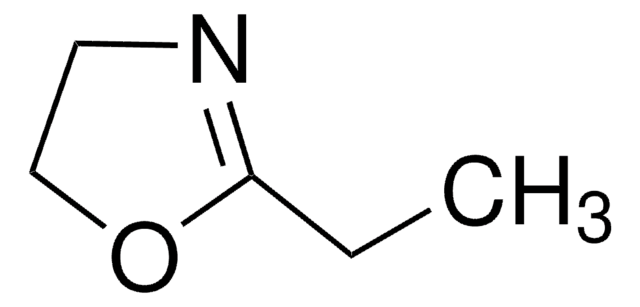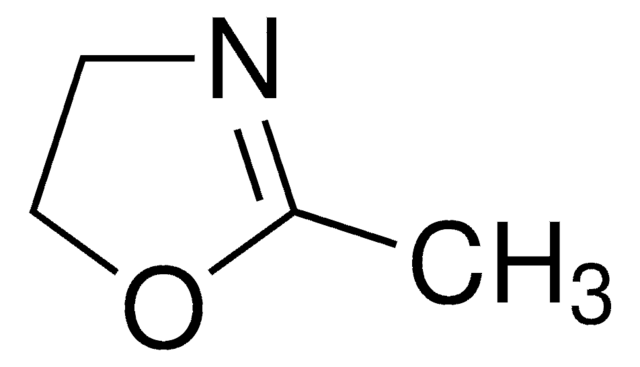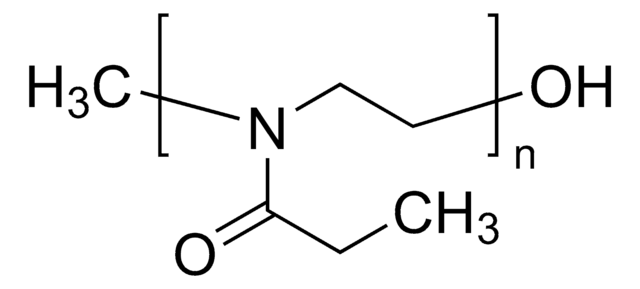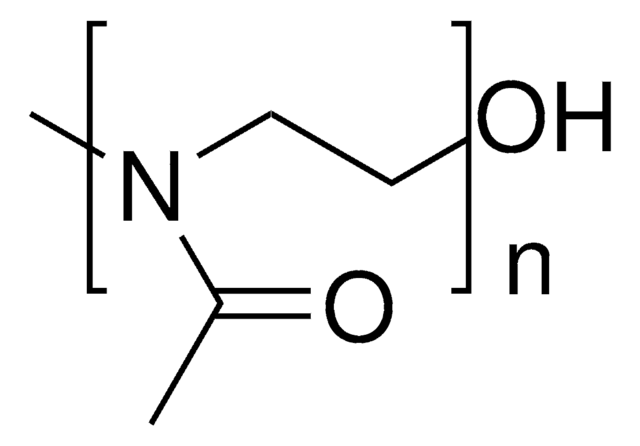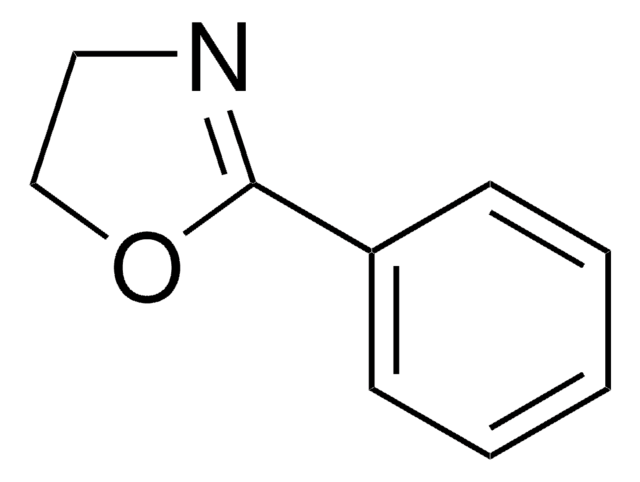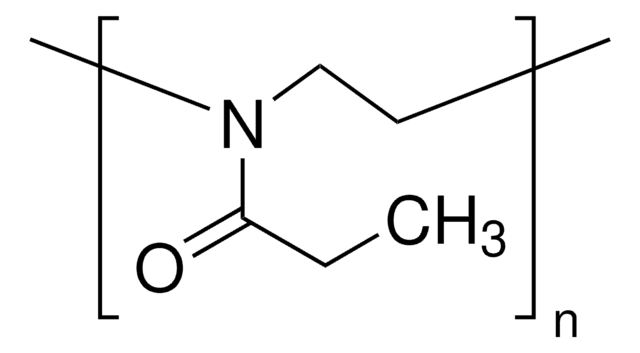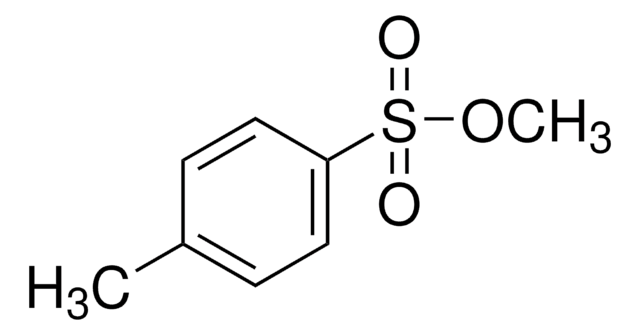372846
Poly(2-ethyl-2-oxazoline) 5-7 cSt
Synonym(s):
Poly(2-ethyl-2-oxazoline), PEOX, POx, PetOx, poly 2-ethyloxazoline, polyethyloxazoline
About This Item
Recommended Products
form
solid
Quality Level
mol wt
average Mw ~50,000
refractive index
n20/D 1.52
viscosity
5-7 cSt, 10 % in water(100 °F)
transition temp
softening point 110-120 °C (Vicat, ASTM D 1525-82)
Tg 69-71 °C
density
1.14 g/mL at 25 °C (lit.)
PDI
3‑4
InChI
1S/C5H9NO/c1-2-5-6-3-4-7-5/h2-4H2,1H3
InChI key
NYEZZYQZRQDLEH-UHFFFAOYSA-N
Looking for similar products? Visit Product Comparison Guide
Related Categories
Application
Potential substitute for poly(vinyl alcohol) and poly(vinyl pyrrolidone). Adhesion promoter in coatings. Heat sealing and remoistenable hot-melt adhesive
Features and Benefits
Physical form
Storage Class Code
11 - Combustible Solids
WGK
WGK 3
Flash Point(F)
Not applicable
Flash Point(C)
Not applicable
Personal Protective Equipment
Choose from one of the most recent versions:
Already Own This Product?
Find documentation for the products that you have recently purchased in the Document Library.
Articles
The introduction of polymers into the biomedical field has opened new avenues in tissue engineering, implant design, biosensing, and drug delivery.
We present an article that discusses two applications in particular; first, using these layers as polyelectrolyte membranes to control permeability.
Our team of scientists has experience in all areas of research including Life Science, Material Science, Chemical Synthesis, Chromatography, Analytical and many others.
Contact Technical Service